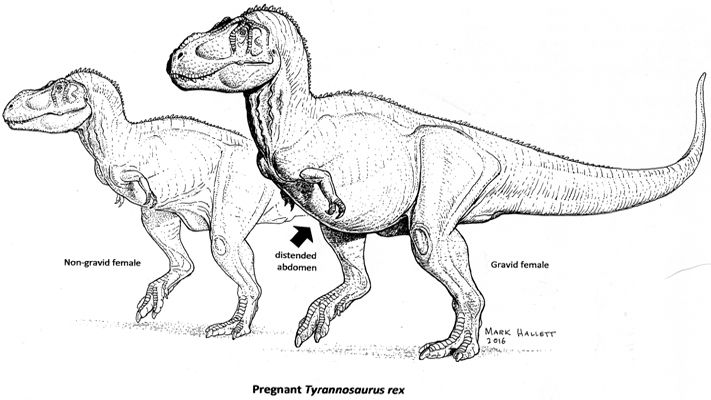“Prego-saurus”: Bone Test Confirms that T-Rex was Pregnant When She Died
By Aphra Murray, Staff Writer
Bone fragments of ancient organisms or fossils are sometimes considered to have little to no information; they provide insight into the build of the creature and also provide an interesting display at a museum. However, recent discoveries of the remains of what is understood to be Tyrannosaurus Rex show that she was in fact pregnant when she died. This interesting discovery has allowed paleontologists and archeologists alike clues as to how to distinguish between male and female carnivorous dinosaurs.
The discovery of the massive fossil itself, in 2005, was almost entirely accidental. Bob Harmon, one of the excavators working at a site in Montana, sat down for a break and felt the fossil jutting into his back. These happy accidents then lead to three years of digging and excavation of the Tyrannosaurus Rex, which upon closer inspection, turned out to have calcium deposits indicative of a female egg-laying organism. Both chemical testing and microscopic works were done on the 2005 bone sample and showed that the predictions were indeed correct.
Because the technology has only recently become available, these discoveries are coming years after the bones were first excavated. Furthermore, the accidental discovery became even more interesting because these bone deposits are only present in females in the egg-laying period, making them extraordinarily rare. That they were discovered on a break is almost fairytale like.
Unknown by most of the public, prior to this discovery, paleontologists found it near impossible to distinguish between male and female carnivorous dinosaurs. Despite the fact that both the male and females have unique sexual signaling traits such as whistles, colorful crests and horns, scientists were unable to assign those attributes to a specific sex.
This discovery therefore has some much larger consequences and implications in the world of paleontology. Firstly, it has given rise to the development of analytical techniques in the examination of fossils but has also proven to give light to at least two other remains of Tenotosaurus and Allosaurus, that died either just before, during, or just after laying eggs.
Furthermore, these techniques have laid the groundwork for returning to previously discovered fossils and beginning the processes of identifying whether they were male or female and thus continuing to learn more about these ancient creatures.

